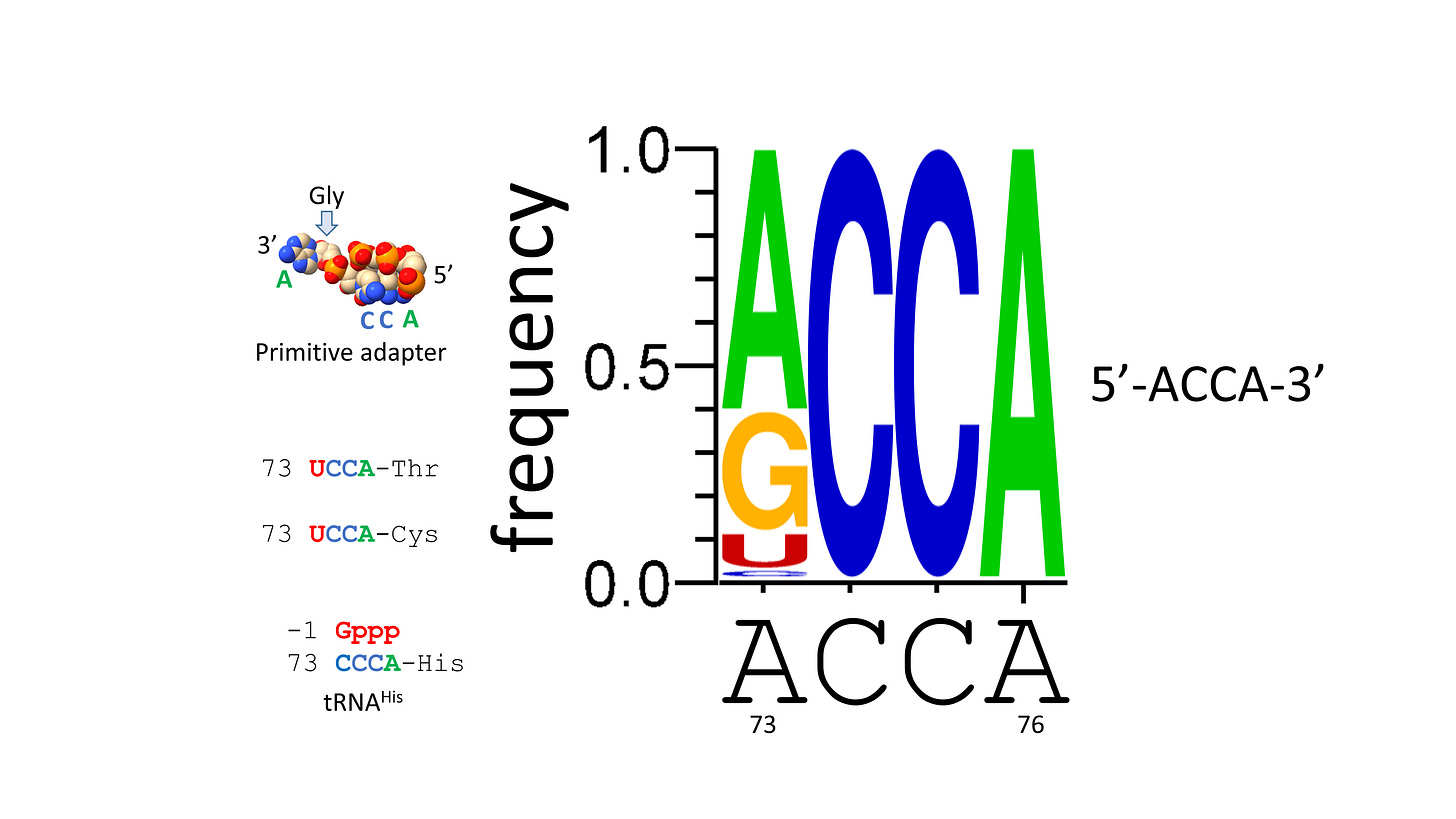To evolve life requires an adapter molecule.
An adapter molecule links an amino acid to an RNA.
tRNA is the adapter molecule in living systems on Earth.
ACCA-Gly was the primitive adapter on planet Earth.
Multiple ACCA-Gly can interact with a GCGGCGGCGGCG repeat. With wet-dry cycles, one could make polyglycine in a laboratory using ACCA-Gly as the primitive adapter.
ACCA-Gly was attached to many RNAs, including tRNAs, to support tRNA evolution.
In tRNA, tRNA-73 becomes the discriminator base. Aminoacyl-tRNA synthetases (the enzymes that attach an amino acid, i.e., glycine, to a cognate tRNA) use the discriminator base as one indicator of what cognate amino acid to attach to which cognate tRNA decreasing protein synthesis errors.
The 74-CC-75 sequence interacts with a GG sequence in the peptidyl site within the peptidyl-transferase center of the ribosome.
In tRNAHis, tRNA-73C is present. This could be a problem for orientation of tRNAHis-peptide in the peptidyl site of the peptidyl-transferase center of the ribosome leading to protein synthesis errors.
So, a system evolved to modify the 73-CCCA sequence in tRNAHis by pairing a tRNA(-1)-GTP opposite tRNA-73C. This enzyme is as ancient as the genetic code and was necessary to evolve the code.
So, in tRNAHis-peptide, ribosome peptidyl site GG recognizes accurately tRNAHis-74-CC-75 and the peptide chain is properly oriented.
Without a genetic code, there is no life.
Chemical Evolution of Life on Earth
subscription is free




